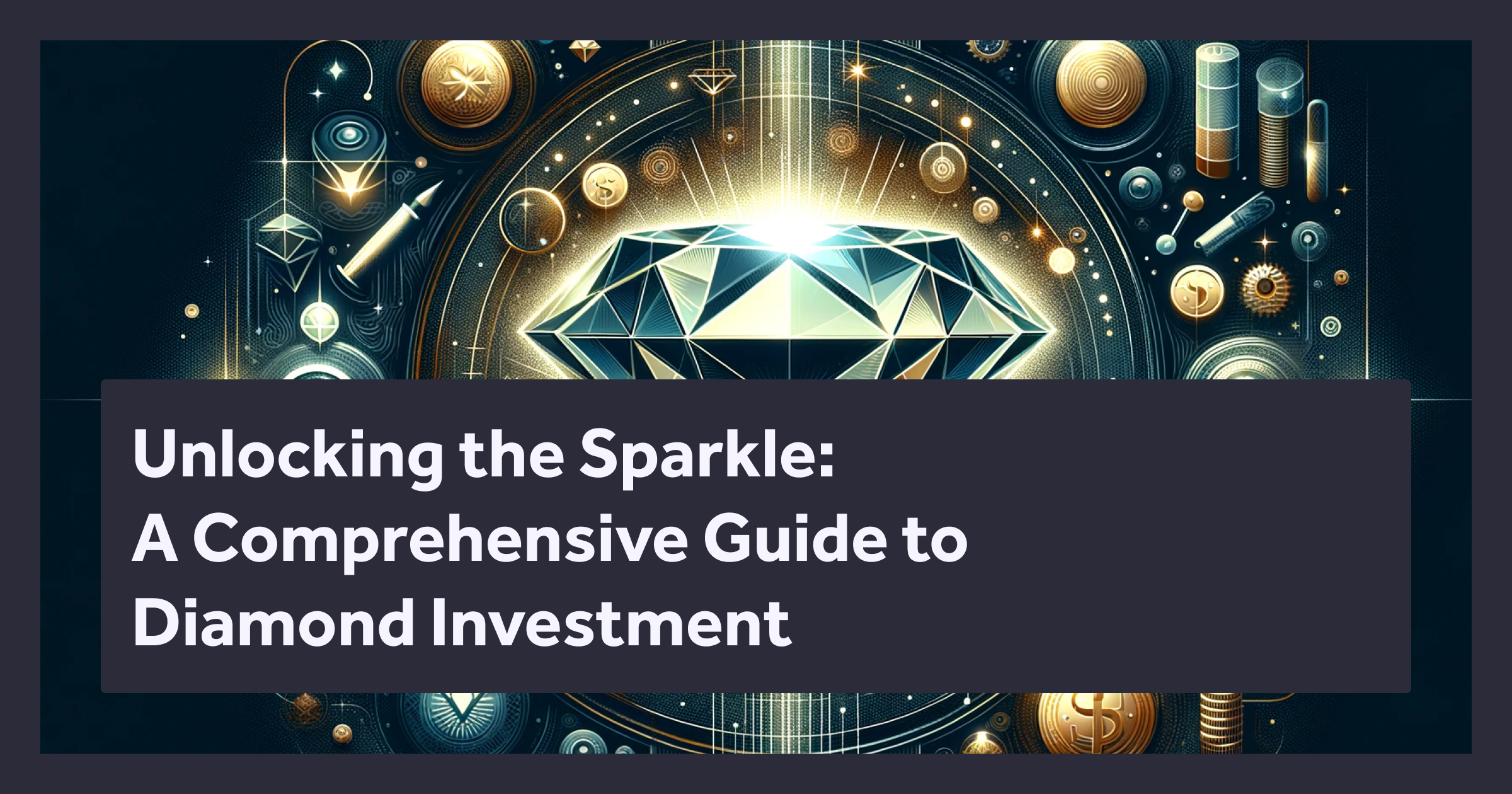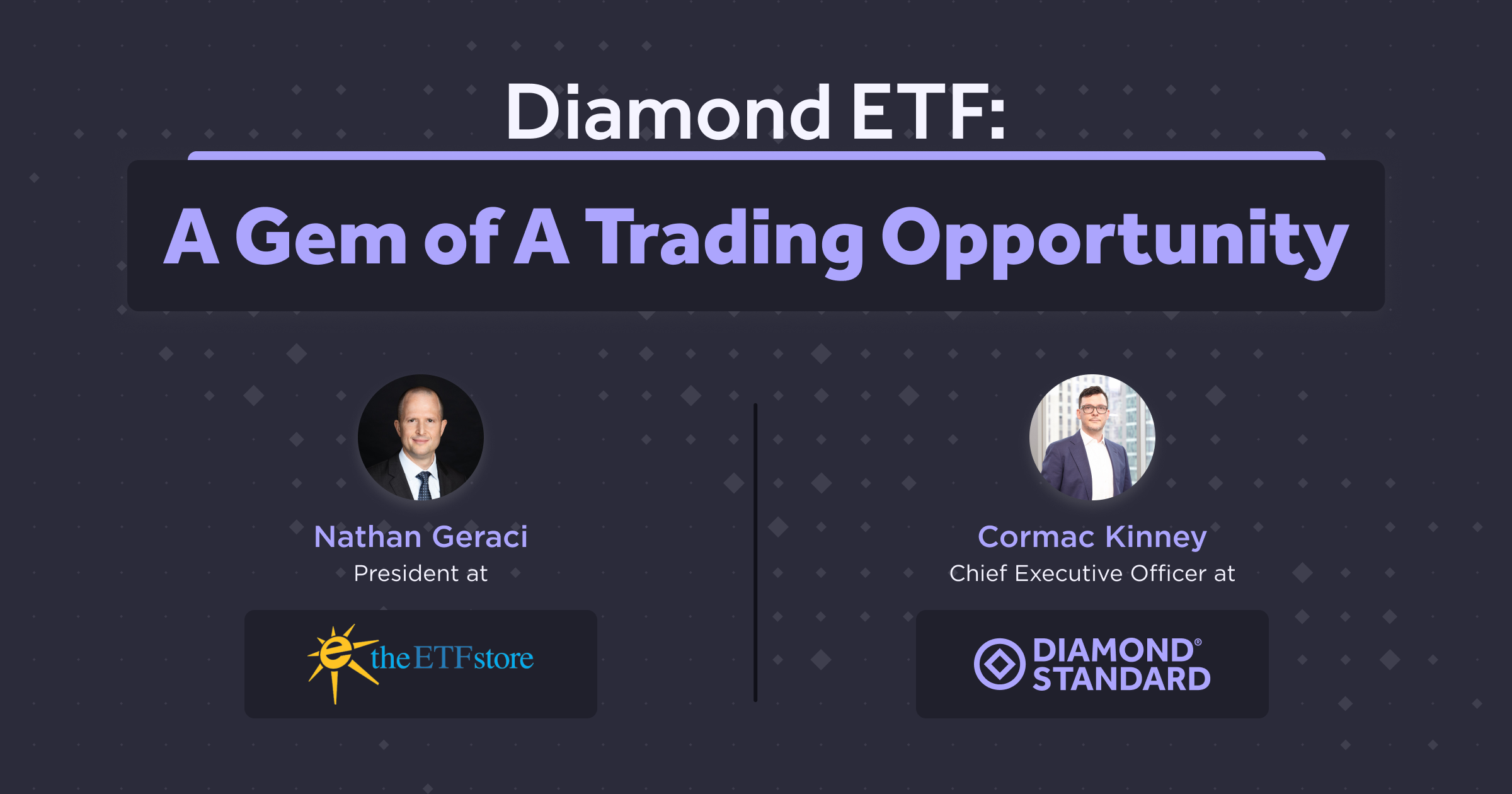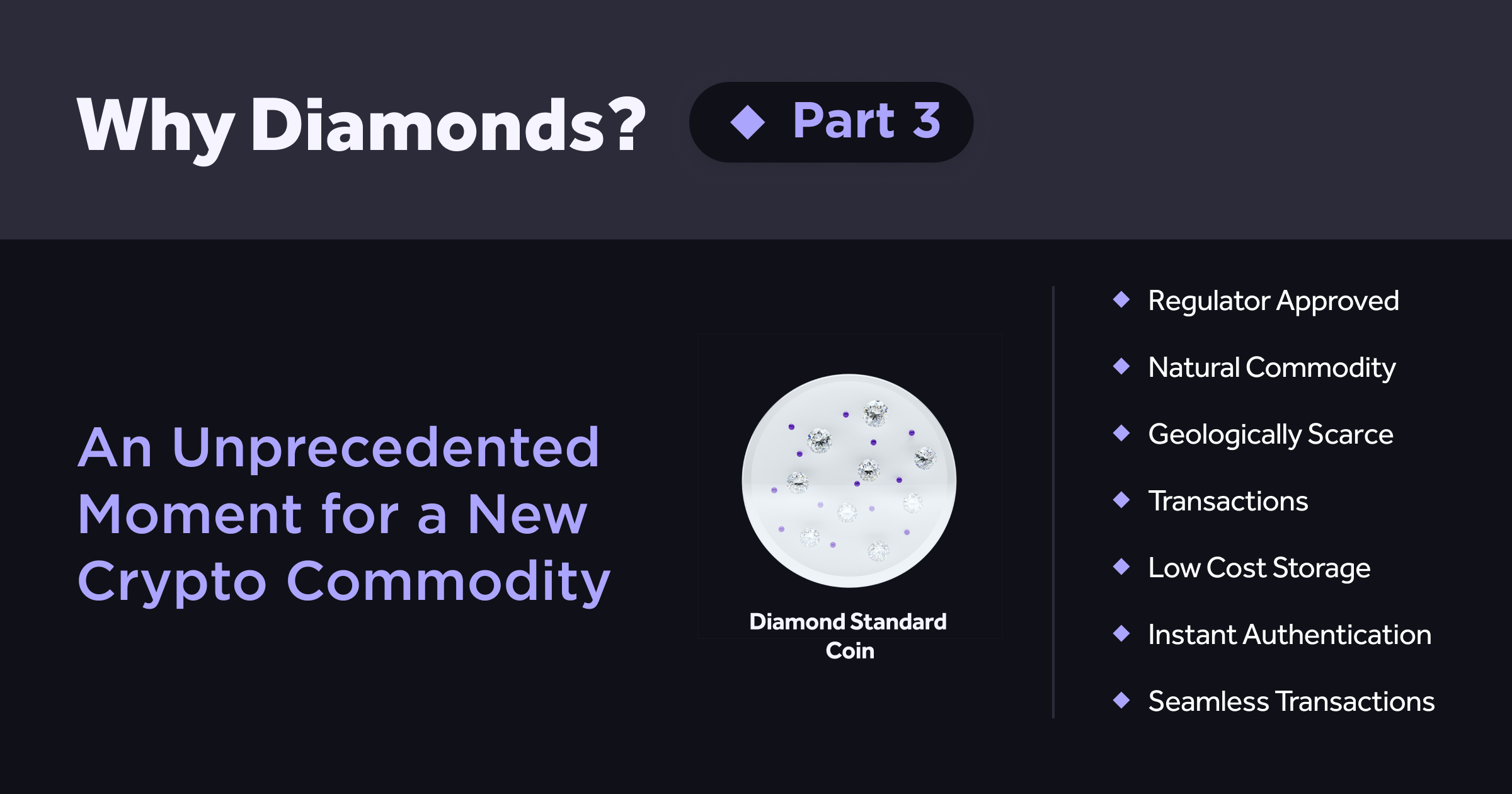This Article Explores
The contrarians often prove to be market prophets with a “don’t follow the crowd” policy. Horizon Kinetics’ CEO and CIO Murray Stahl recently joined Diamond Standards’ Founder and CEO Cormac Kinney on Real Vision for a must-see, deep dive on building investment ideas that make use of network effects, infrastructure changes, and scarce commodities.
The Cut brings you a curated selection of their transformational conversation by highlighting the creative macro trends that could become the markets’ next big opportunity.
This interview has been edited and condensed for clarity.
Key Highlights:
-
Horizon Kinetics is the second largest holder of the Grayscale Bitcoin Trust (GBTC) after Cathy Wood and ARK.
-
In January 2021, Horizon Kinetics launched an IPO of the Inflation Beneficiaries ETF that has already passed $900 million in net assets.
-
Diamond Standard plans to create the Diamond Standard Trust in January. Horizon Kinetics is a co-sponsor of the Diamond Standard Trust and will offer it to clients and other professional investors.

CORMAC KINNEY: How many years ago did you start investing in Bitcoin? You were very early for an institutional investor in 2015. What were those conversations like with your clients?
MURRAY STAHL: I didn't know anything about Bitcoin in the beginning. All I knew at the time was the name. And I knew it had something to do with cryptology. And I'm just interested intellectually in cryptology and never did anything with it other than read books on cryptology. So, code breaking or code making, the mathematics thereof, I just happen to find it fascinating.
When I read about cryptology, the first article had to do with something called the Byzantine Generals Problem. And I thought, mathematically, there was no solution, and someone found the solution. How cool is that? That was the key because it made reference to a book I'd read many years before. That book was entitled, The Denationalization of Money by Friedrich Hayek.
Have you ever had a situation where someone mentions a book, and you had read it several years ago, and you say I want to look at that book. It is on a shelf somewhere, you even forget where it is? I looked at it, and I began rereading it. The book was written in the 1970s. The problem of inflation was dire at the time. Hayek wrote that the world will never really master the problem with inflation, until it's able to control the central banks, but it can't control the central banks, because the premise of central banking is that they must be independent.
The idea was, if they were private central banks, they would compete with central banks. In other words, don't control the central bank, just take away the central banking monopoly. So, the more stable currency by Gresham's Law will be the one that's preferred. That was the idea, then came the problem, which Hayek really didn't consider -- the authentication problem. So, if you're using the Bitcoin protocol in the 1970s, of course, we didn't have the computer technology to do that.
But he said, I'm going to come up with a currency with 21 million units like Bitcoin. How does anyone know that you really have 21 million units? What if it's 21.5 or 22 or 29? Say it was I, and I said, there are really 21 million units. But I created 22 million and I kept a million for myself. How do you know I'm not?
CORMAC KINNEY: No government in history has been able to resist.
MURRAY STAHL: That's right. No government in history has been able to resist, and maybe no person in history could resist until the blockchain technology. Blockchain technology, you can actually have a decentralized system, where everybody can see the ledger. And there's proof you know, in any given moment how many coins are in existence. And you're not relying on any one central counterparty to do the counting.
So, that was explained to me in the article I read. I realized what this was, that this was a seminal advance for society. And I felt I had to be in it. The next morning, I go into the research meeting, I tell everybody, “I'm going to buy Bitcoin.” They thought I lost my mind. They tried to talk me out of it. And I said, “You can try to talk me out, but I'm going to do it.” And I really did.
And I was so pleased with it that I just couldn't stop buying it. And I was buying it in the form of the Bitcoin Investment Trust, because I had no idea how to hold it or custody it. So, I was buying it in the form of security. And that's how I became, at the time, the biggest holder of GBTC.

CORMAC KINNEY: You launched a fund not too long ago, the IPO of the INFL ETF (Horizon Kinetics Inflation Beneficiaries ETF) which is designed to hedge against inflation. And I saw that now you've raised nearly $900 million for that ETF, and it's up about 25% since January. Tell us about that.
MURRAY STAHL: We launched on January 12, actually. And the idea is that, in theory, you might say that any publicly traded stock would benefit from inflation and that the nominal revenue and nominal earnings would rise in inflation. The problem is what economists would call The Scissors Effect. So, the issue is in a real inflationary environment, would your costs rise faster than your revenues?
The problem was to find companies that had minimal cost of production, hence, the royalty companies. There really are no costs and revenues, more or less go right to the bottom line. That's the idea behind it in simplistic terms, inflation beneficiaries. People might be interested, they may want to ask me, well, why wouldn't your costs and your revenue be more or less synchronized? Lots of reasons.
To make it brief, the progressive income tax is the problem. I'm not against the progressive income tax, it is just from an inflationary point of view it is an issue. So, let's just say the inflation rate, to pick a number everyone can comprehend, was 10%. So, you could say, well, why can't the company simply raise the price of its goods or services by 10%? Give everybody a 10% raise? Well, they could do that. The problem is because of the progressive income tax, the employees wouldn't take home 10% more. They might take home 9.5% more. And therefore, in the fullness of time, they would be in retrograde motion relative to inflation.
There will be margin squeeze, that will be The Scissors Effect. So, most companies, because the costs are so enormous in an inflationary environment, and the progressive income tax is with us, they're going to have a problem. That's ultimately the issue that the INFL Inflation Beneficiaries ETF was designed to deal with.
CORMAC KINNEY: How many companies do you hold in the ETF generally?
MURRAY STAHL: Roughly, could be 35 to 40. It's not a lot. And the problem is that there aren't that many companies that would be beneficiaries. That's why you would have the gold royalty companies. So, you look at their operating margins. They're hiring Google, they're hiring Microsoft. And the reason is because that's the way the business was designed. The idea is to get a royalty and not have very many people in the way. So, whatever you pay the people is a minuscule portion of the revenues. Therefore, the operating margin is not an issue. It just remains consistently high.
CORMAC KINNEY: How do you find those other 30-some stocks to fill the ETF?
MURRAY STAHL: It's a career of decades, and over the years, I found that one will lead me to another one. I look at a lot of different companies until I find the right one. There's really no way to screen for it. You can screen for high margins, but you will get a biotechnology company, that's not going to work. You could screen for businesses that don't employ a lot of capital, but then they might be an asset manager. And that might not work.
CORMAC KINNEY: So, this ETF is a result of your theses coming together into an accessible format versus trying to create a product that you could market.
MURRAY STAHL: That's right. That's the expression of the investment idea.

MURRAY STAHL: Tell us about Diamond Standard, its origin and its objective?
CORMAC KINNEY: I was a trader doing statistical arbitrage. My wife is a jewelry designer. And partly through osmosis, I learned a lot about diamonds, mainly because she was always telling me how frustrating that market is and that when she buys diamonds, there's no price transparency.
I became very interested when I learned how big of a market it is, which is about $1.2 trillion, which makes diamonds more valuable than silver, platinum, palladium, rhodium combined. But diamonds were never fungible. And I realized that was what was limiting them from having price transparency, liquidity, and any use by investors because they could never mark diamonds to market.
I think my whole career brought me to Diamond Standard, starting with optimization, statistical arbitrage, automated market making, and more recently, blockchain, that those technologies combined to make the Diamond Standard commodity possible. It’s a physical commodity that contains an optimized sample of diamonds such that every commodity is equivalent. Whether we make them today or in 30 years, they're always equivalent.
MURRAY STAHL: I must say, just as a comment, with the first thing I'd heard that you had worked on, the problem of solving the heterogeneity of diamonds, and anybody who could do that -- to begin with, it's got to be brilliant, you have to be brilliant. But in addition to that, that is an idea that really creates diamonds as an investable asset class. That's the key. So, it was, I have my say just as I commented, extremely impressive.
CORMAC KINNEY: Now, we're launching a fund together, which I'm excited about, the Diamond Standard Trust. What brought you to agree to do that?
MURRAY STAHL: Well, part of it is your brilliance I must say. I hope you don't mind me complimenting you. But what you did is you solved the problem of heterogeneity. That means that diamonds will become an asset class. So, diamonds become an asset class. They're going to be more valuable. The secret behind Bitcoin, incidentally, is Metcalfe’s Law. It started with a handful of people. The same thing is going to happen in diamonds, because right now, there's not a network effect in diamonds, because they're at the moment largely heterogeneous.
And as you decide you want to sell your diamonds, there's a handful of diamond dealers you can go to. And if you decide you'd like to buy diamonds, there's also a handful of diamond dealers or jewelers you can go to. It's an enormous number. And that's why the market is not efficient. But as you increase the number of takers of your diamonds if you wish to sell them, or as you increase the number of offers for diamonds if you wish to buy them, it'll be priced in an entirely different way.
And that's what makes the idea of the Trust so extraordinary. I couldn't be more excited about it.
To watch the segment on Real Vision please visit:
More Industry Insights




